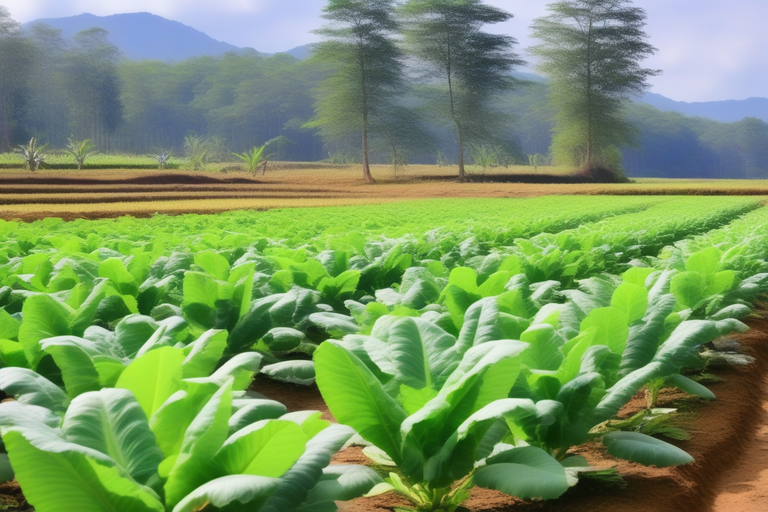Bathua, a winter plant, thrives in well-drained soil and is adaptable to various types of conditions except waterlogged ones. Dense clay and organic matter help it grow faster. Commonly known as Lambs Quarters, Goose Foot, or wild spinach, Bathua is a fast-growing annual celebrated for its culinary appeal in regions like Rajasthan, Himachal, and Punjab.
With around 75,000 seeds per plant, it offers nutritional benefits but poses challenges as an invasive weed in wheat crops. Despite this, its popularity persists in certain areas, emphasising its resilience and culinary significance.
Learn more about the commercial prospects and farming details of Bathua, including insights into Mahindra 475 and Mahindra 575 DI price, in the blog below.
Table of Contents
Commercial cultivation of Bathua
While Bathua thrives in certain parts of India, its commercial cultivation faces hurdles. The crop’s limited popularity in Southern India and the prevailing low market value make it a less viable option for large-scale farming. Despite its numerous health benefits, the journey towards commercialising Bathua is a slow one.
Considering the limited demand and consumption patterns, commercial cultivation of Bathua is only sometimes recommended. The sizable acreage required for cultivation, especially in regions where Bathua is not a dietary staple, poses a significant risk. Even in regions like Rajasthan, where Bathua finds its way to the market, strategic planning is crucial for any commercial venture.
Bathua, with its strong tap roots and distinctive stem features, proves to be an excellent cover crop. If you own an orchard and want to make the most of your space, planting Bathua in unused areas can be a valuable way to utilise that space. Its adaptability to a variety of soils, coupled with resistance to drought, makes it an ideal choice for covering the spaces between orchard crops.
Bathua Farming: An Overview
This winter plant shows fast growth with pink or purple-striped stems and alternate, varied leaves. Starting as an upright grower, Bathua expands horizontally after reaching approximately 50cm in height. While it can get 1.5 meters in height, most plants hover around the one-meter mark.
Seeds as a Nutritional Bonus: Consuming the Harvest
Apart from its leaves, Bathua seeds also boast nutritional value and are consumed. Recognising the dietary benefits of these seeds adds to the overall appeal and utility of cultivating Bathua.
Cultivation Requirement For Bathua
Bathua thrives in full sun and demonstrates remarkable drought tolerance. Its adaptability extends to various soil types, provided they are well-drained. For optimal growth in clay soil, the addition of organic matter is recommended to enhance looseness.
Managing Pests
While Bathua is a weed, its cultivation comes with risks. The plant attracts pests, including leaf miners, making it a potential threat to nearby wheat, sugar beet, and soy farms. Farmers must employ suitable pest control measures to safeguard their crops.
Varieties and Seed Requirements:
Bathua cultivation involves selecting suitable varieties such as Bathia 1, Pusa Bathua 2, Kashi Bathua 2, Black seeds, and White seeds. The recommended seed rate for direct sowing is 1.5 to 2 kg per hectare, while replanting requires 450-gram seeds raised in a nursery for every hectare.
Land Preparation and Planting Guidelines:
Successful Bathua cultivation begins with proper land preparation, incorporating 25-30 tonnes of Farm Yard Manure (FYM) and a balanced mix of NPK (20:50:50) per hectare. Sowing seeds at a depth of 3 mm, with transplanting after 35 days if raised in a nursery, sets the foundation for healthy plant growth. Proper spacing is vital, with recommendations of 20 cm plant-to-plant distance and 30 cm between rows for regular plants and 60 cm by 45 cm for seed production.
Yield and Harvest:
The Mahindra 575 and Mahindra 475 DI price vary based on models and specifications. Moving to agriculture, for Bathua cultivation, the initial harvest takes place 40-45 days after replanting, allowing for subsequent cuttings every 20 days. With an impressive potential yield of 40 tonnes per hectare, seed harvesting follows between 150-180 days. Threshing the entire crop with sticks is the common practice, resulting in an expected seed yield of 6 quintals per hectare.
Benefits Of Eating Bathua In Winters
Bathua, a wintergreen, offers numerous health benefits, making it a must-include in your seasonal diet. Packed with vitamins A, C, and D, along with minerals and antioxidants, Bathua aids in cell repair, strengthens bones, and promotes growth in children. Its hydrating and fibrous nature makes it an excellent remedy for constipation, while its low-calorie content supports weight loss. Rich in protein, Bathua contributes to healthy hair and improves eyesight.
Ayurvedically, it possesses pain-relieving properties and is considered a sattvic Sahar. Versatile and immune-boosting, Bathua is also beneficial for dental health and liver function, offering a balanced and micronutrient-rich addition to winter meals.
Conclusion:
In conclusion, Bathua cultivation holds promise, particularly as a cover crop and in regions where it enjoys culinary popularity. While commercial ventures demand careful consideration, the nutritional benefits and adaptability of Bathua make it a valuable addition to diverse farming practices. As agricultural landscapes evolve, understanding and harnessing the potential of this nutrient-rich weed can pave the way for a more sustainable and nutritious future.

